Audi Q6 e-tron vs Tesla Model Y – Differences & prices compared
Compare performance, boot space, consumption and price in one view.
Find out now: which car is the better choice for you – Audi Q6 e-tron or Tesla Model Y?
The Audi Q6 e-tron (SUV) comes with a Electric engine and Automatic transmission. In comparison, the Tesla Model Y (SUV) features a Electric engine with Automatic transmission.
When it comes to boot capacity, the Audi Q6 e-tron offers 526 L, while the Tesla Model Y provides 0 L – depending on how much space you need. If you’re looking for more power, decide whether the 516 HP of the Audi Q6 e-tron or the 514 HP of the Tesla Model Y suits your needs better.
In terms of consumption, the values are 15.60 kWh per 100 km for the Audi Q6 e-tron, and 13.90 kWh for the Tesla Model Y.
Price-wise, the Audi Q6 e-tron starts at 54400 £, while the Tesla Model Y is available from 38600 £. Compare all the details and find out which model fits your lifestyle best!
In the rapidly evolving electric SUV market, the Audi Q6 e-tron positions itself as a sophisticated rival to the Tesla Model Y, offering a blend of cutting-edge technology and luxurious comfort. While the Model Y excels in range and performance, the Q6 e-tron impresses with its upscale interior and advanced driver-assistance features. Ultimately, buyers will need to decide between Tesla's established charging infrastructure and the premium craftsmanship synonymous with Audi.
Audi Q6 e-tron
The Audi Q6 e-tron represents a significant step forward in the realm of electric vehicles, offering a perfect blend of cutting-edge technology and timeless design. With its spacious interior and advanced infotainment system, it provides both comfort and connectivity for the modern driver. The Q6 e-tron embodies Audi's commitment to sustainability without compromising on performance or luxury.
details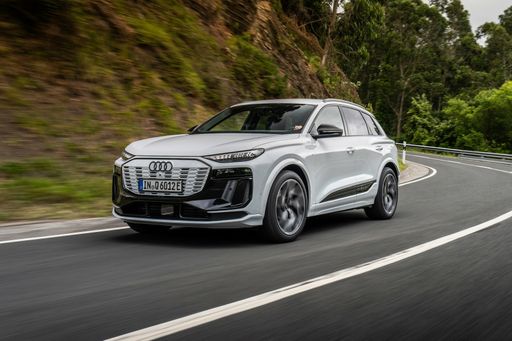 @ audi-mediacenter.com
@ audi-mediacenter.com
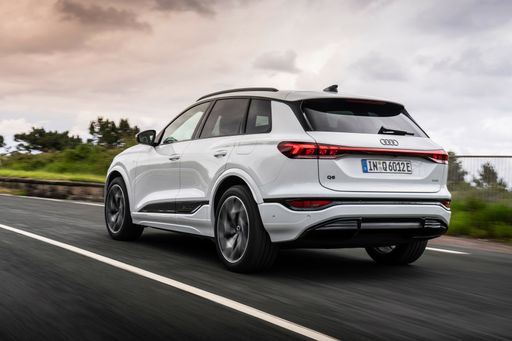 @ audi-mediacenter.com
@ audi-mediacenter.com
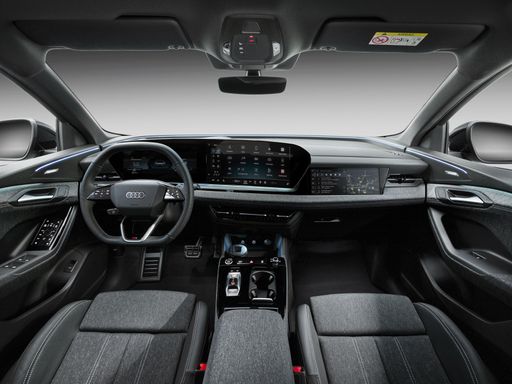 @ audi-mediacenter.com
@ audi-mediacenter.com
Tesla Model Y
The Tesla Model Y stands out in the electric vehicle market with its sleek design and impressive range. Its interior is minimalist yet stylish, offering a spacious cabin that enhances the driving experience. The Model Y also features advanced technology, including an intuitive infotainment system, making it a leader in innovative motoring.
details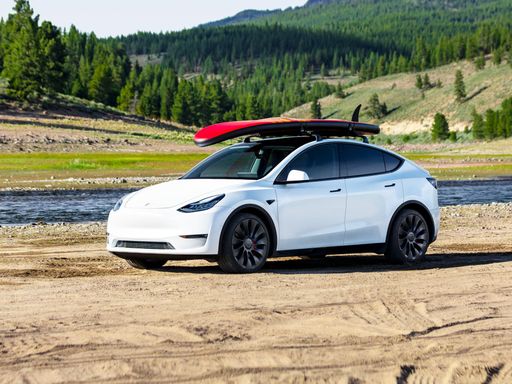 @ tesla.com
@ tesla.com
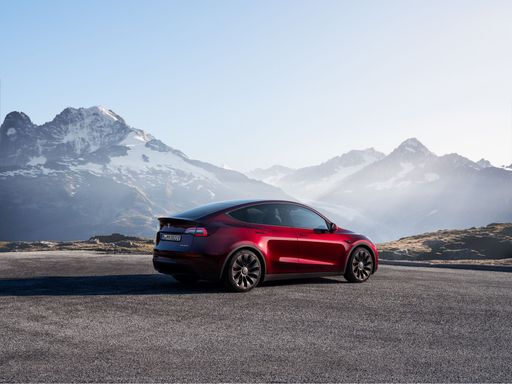 @ tesla.com
@ tesla.com
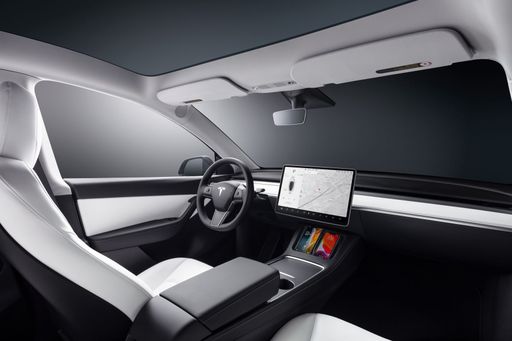 @ tesla.com
@ tesla.com
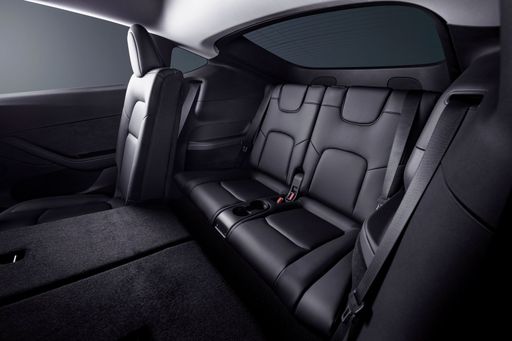 @ tesla.com
@ tesla.com
Introduction: The Electric SUV Showdown
In the world of electric SUVs, two titans have emerged: the Audi Q6 e-tron and the Tesla Model Y. Both vehicles boast impressive specifications, cutting-edge technologies, and a commitment to sustainability. This article delves into a detailed comparison of these two remarkable electric machines to help potential buyers make an informed decision.
Design and Dimensions
The Audi Q6 e-tron presents itself with the characteristic sleek and upscale design Audi is known for. With a length of 4771 mm, a width of up to 1965 mm, and a height of 1685 mm, it establishes a commanding presence on the road. Its aerodynamic profile not only enhances aesthetics but also contributes to efficiency.
On the other hand, the Tesla Model Y, measuring 4751 mm in length and 1921 mm in width, is slightly smaller but equally appealing. Its height of 1624 mm gives it a sporty look while maximizing interior space. Both vehicles feature five doors, making them practical choices for families and everyday users.
Power and Performance
Performance-wise, the Audi Q6 e-tron offers a range of power outputs with engines producing between 292 HP and 516 HP, providing options for both efficiency and thrill. Its electric range stands out, with some variants capable of traveling up to 656 km on a single charge, making long-distance travels a breeze. Additionally, the Q6 e-tron can accelerate from 0-100 km/h in as little as 4.3 seconds, emphasizing its sporty credentials.
The Tesla Model Y matches this performance pledge with engines boasting between 299 HP and a staggering 534 HP. With an electric range of up to 600 km, it is highly competitive in the long-range battle. The Model Y also offers rapid acceleration, achieving 0-100 km/h in 3.7 seconds in its highest performance variant.
Battery and Charging
The Audi Q6 e-tron features battery capacities of 75.8 kWh and 94.9 kWh, ensuring flexibility for different needs. In terms of efficiency, its consumption rates vary between 15.6 to 18.9 kWh/100 km. This efficient energy use provides potential for greater range and lower overall cost of ownership.
Tesla's Model Y, with battery options of 62 kWh and 79 kWh, showcases slightly lower energy consumption rates ranging from 14.9 to 17.3 kWh/100 km. This superior efficiency gives the Model Y an edge, particularly for eco-conscious consumers.
Interior and Technology
Inside, the Audi Q6 e-tron emphasizes luxury and high-tech functionality with a spacious cabin designed for comfort. Features like a state-of-the-art infotainment system, high-quality sound options, and premium materials define the driving experience. With a trunk capacity of up to 526 liters, space efficiency is a hallmark of this SUV.
In contrast, the Tesla Model Y is known for its minimalist interior and cutting-edge technology. The massive touchscreen interface dominates the dashboard, providing intuitive control over the vehicle's functions. With a roomy trunk capacity of 854 liters, it also excels in practicality.
Safety and Efficiency Class
Both vehicles are designed with safety in mind, achieving a CO2 efficiency class of A, reflecting their environmentally friendly credentials. Features like advanced driver-assistance systems, collision avoidance technologies, and multiple airbags are standard across both models, ensuring driver and passenger safety.
Price and Conclusion
Price varies between the two competitors, with the Audi Q6 e-tron typically positioned in a higher price bracket due to its luxurious features and branding. The Model Y offers a more affordable entry point, making it highly appealing for tech-savvy consumers looking for value.
In conclusion, the Audi Q6 e-tron and Tesla Model Y both bring formidable capabilities to the electric SUV market. Audi owners benefit from luxurious refinement and range, while Tesla advocates appreciate sporty performance and innovative technology. Ultimately, the choice between these two exceptional vehicles will come down to personal preferences and priorities.

|

|
|
|
|
Costs and Consumption |
|
|---|---|
|
Price
54400 - 91900 £
|
Price
38600 - 45400 £
|
|
Consumption L/100km
-
|
Consumption L/100km
-
|
|
Consumption kWh/100km
15.6 - 18.9 kWh
|
Consumption kWh/100km
13.9 - 15.3 kWh
|
|
Electric Range
482 - 656 km
|
Electric Range
500 - 622 km
|
|
Battery Capacity
75.8 - 94.9 kWh
|
Battery Capacity
62.5 - 78.4 kWh
|
|
co2
0 g/km
|
co2
0 g/km
|
|
Fuel tank capacity
-
|
Fuel tank capacity
-
|
Dimensions and Body |
|
|---|---|
|
Body Type
SUV
|
Body Type
SUV
|
|
Seats
5
|
Seats
5
|
|
Doors
5
|
Doors
5
|
|
Curb weight
2200 - 2425 kg
|
Curb weight
1976 - 2072 kg
|
|
Trunk capacity
499 - 526 L
|
Trunk capacity
0 L
|
|
Length
4771 mm
|
Length
4790 mm
|
|
Width
1939 - 1965 mm
|
Width
1921 mm
|
|
Height
1665 - 1685 mm
|
Height
1624 mm
|
|
Payload
540 kg
|
Payload
-
|
Engine and Performance |
|
|---|---|
|
Engine Type
Electric
|
Engine Type
Electric
|
|
Transmission
Automatic
|
Transmission
Automatic
|
|
Transmission Detail
-
|
Transmission Detail
-
|
|
Drive Type
Rear-Wheel Drive, All-Wheel Drive
|
Drive Type
Rear-Wheel Drive, All-Wheel Drive
|
|
Power HP
292 - 516 HP
|
Power HP
299 - 514 HP
|
|
Acceleration 0-100km/h
4.3 - 7 s
|
Acceleration 0-100km/h
4.8 - 5.9 s
|
|
Max Speed
210 - 230 km/h
|
Max Speed
201 km/h
|
|
Torque
450 - 855 Nm
|
Torque
420 - 493 Nm
|
|
Number of Cylinders
-
|
Number of Cylinders
-
|
|
Power kW
215 - 380 kW
|
Power kW
220 - 378 kW
|
|
Engine capacity
-
|
Engine capacity
-
|
General |
|
|---|---|
|
Model Year
2024 - 2025
|
Model Year
2025
|
|
CO2 Efficiency Class
A
|
CO2 Efficiency Class
A
|
|
Brand
Audi
|
Brand
Tesla
|
Audi Q6 e-tron
Introducing the Audi Q6 e-tron: A Step into the Future of Electrification
The Audi Q6 e-tron marks a significant stride forward in the electric vehicle sector, cementing Audi's commitment to innovation and sustainability. This state-of-the-art SUV combines luxury, performance, and cutting-edge technology, catering to the eco-conscious driver without compromising on power or style.
Design Meets Functionality
The Audi Q6 e-tron showcases a sleek design aesthetic common in the Audi lineage. With a length of 4771 mm, it strikes an imposing presence on the road, combining practicality with sophisticated styling. It features a spacious interior that comfortably seats five and offers a generous boot capacity of 514 to 526 litres, making it perfect for both everyday commutes and longer journeys.
Advanced Powertrain Options
The Audi Q6 e-tron comes with a variety of powertrain configurations, reflecting the brand's push towards greater innovation in electric mobility. With a power range between 292 to 516 PS and a torque spread of 450 to 855 Nm, the vehicle promises an engaging driving experience. The electric drivetrain offers two modes of propulsion: rear-wheel drive for more traditional handling and all-wheel drive for enhanced traction under diverse driving conditions.
Efficiency Meets Performance
In terms of efficiency, the Audi Q6 e-tron competes strongly, leveraging advanced battery technology to deliver a range between 482 and 637 kilometres on a single charge, depending on the model. Consumption averages between 16.2 to 18.9 kWh per 100 km, showcasing Audi's commitment to minimal environmental impact. The model's CO2 efficiency class stands at A, highlighting its eco-friendly credentials.
Innovative Technology and Features
The Q6 e-tron is equipped with a host of innovative technologies that enhance both comfort and ultimate control. The vehicle is characterised by Audi’s virtual cockpit, offering intuitive infotainment controls along with a premium sound system. Safety and driver assistance systems are state-of-the-art, incorporating adaptive cruise control, lane assist, and park assist, ensuring peace of mind on every journey.
Acceleration and Speed
A performance enthusiast's dream, the Q6 e-tron accelerates from 0 to 100 km/h in an impressive 4.3 to 7 seconds, contingent on model specification. It boasts a top speed of 210 to 230 km/h, providing the thrilling dynamics typical of Audi's high-performance vehicles.
Electric Vehicle Infrastructure
With varying battery capacities from 75.8 to 94.9 kWh, the Q6 e-tron supports fast charging, making long-distance journeys more feasible than ever before. The advanced energy recuperation system further enhances battery efficiency, maximising range and reducing charging downtime.
A Cost-Effective Investment
The Audi Q6 e-tron presents not just a vehicle but a viable economic investment over the long haul. With a cost structure that spans €63,500 to €104,800, along with monthly running costs ranging from €1,426 to €2,038, it balances premium quality with a sustainable economic footprint.
Conclusion: A New Era of Driving
The Audi Q6 e-tron represents a new chapter in the evolution of electric SUVs, marrying performance with sustainability. As the industry moves toward a greener future, Audi drives forward with innovative design and groundbreaking technology, ensuring that the Q6 e-tron is not just a vehicle but a visionary statement for the future.
Tesla Model Y
Revolutionising the SUV Market: Introducing the Tesla Model Y
The Tesla Model Y has emerged as a trailblazer in the electric vehicle market, combining innovative technology with practicality to redefine what an SUV can offer. With its sleek design and exceptional performance, it's no surprise that this model is capturing the attention of car enthusiasts and eco-conscious drivers alike.
Unparalleled Performance and Efficiency
At the heart of the Tesla Model Y lies its impressive range of power and efficiency options. With power ratings from 299 to 534 PS, the Model Y offers something for every driver. It boasts an impressive electric range from 455 to 600 km, allowing drivers to embark on long journeys with confidence.
An advanced lithium-ion battery, with capacities ranging from 62 to 79 kWh, powers this remarkable vehicle. This ensures not only a robust performance but also efficiency, with consumption figures between 14.9 kWh and 17.3 kWh per 100 km, making it a leader in its class.
Advanced Technology and Safety
Tesla is renowned for its technology-forward approach, and the Model Y is no exception. It features the state-of-the-art Autopilot system, designed to assist with driving and to enhance safety on the road. This includes features such as adaptive cruise control, lane detection, and automatic lane-keeping, which work seamlessly to reduce driver fatigue and improve overall road safety.
The Model Y has achieved a superb CO2-Effizienzklasse rating of A, reflecting its zero-emissions performance, thanks to its fully electric powertrain. This aligns perfectly with Tesla's mission of accelerating the world’s transition to sustainable energy.
Design and Comfort
One glance at the Tesla Model Y, and it is clear that it combines utility with elegance. This SUV offers ample space, marked by a large interior and a boot capacity of 854 litres, making it an ideal vehicle for both family and leisure activities. However, the Model Y does not sacrifice aesthetics for practicality, embodying a minimalist and aerodynamic design that stands out on any road.
Inside, the focus is on comfort and connectivity. The Model Y features a panoramic glass roof, spacious seating for five, and a central 15-inch touchscreen that controls most in-car functions. This screen serves as the central hub for navigation, media, and communication systems, further highlighting Tesla's commitment to integrating sophisticated technology.
Final Thoughts: A Game-Changer in Electric SUVs
The Tesla Model Y is more than just an electric vehicle; it is a testament to what the future of driving looks like. From its performance capabilities to its innovative technology and design, the Model Y continues to set benchmarks in the automotive industry.
For those looking to combine sustainability with performance, the Model Y offers such an opportunity in an attractive package. It is not just a vehicle; it's a statement of forward-thinking mobility and advanced engineering, paving the way for the next era of automotive excellence.
Which drive types are available for the Audi Q6 e-tron?
Available as Rear-Wheel Drive or All-Wheel Drive.
The prices and data displayed are estimates based on German list prices and may vary by country. This information is not legally binding.
